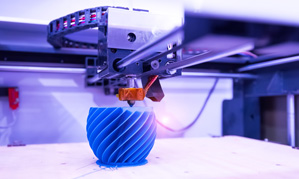
Additive manufacturing, colloquially known as 3D printing, is a generic term that includes all manufacturing processes in which a machine builds up material layer by layer. Additive manufacturing processes are particularly suitable for the production of precision-fit components. A range of technologies and base materials are used, according to the application. Each of these technologies gives rise to particular hazards for workers that must be considered.
At present, no Type C standard exists in the field of additive manufacturing containing detailed requirements for individual machine types. A Type C standard is however currently being developed in the form of EN ISO/ASTM 52938-1. This document defines safety requirements for machines employing a laser beam and bed of metallic powder. The aim of the European stakeholders on the ISO committee is to ensure that the final standard is suitable for harmonization under the EU Machinery Directive. The KAN Secretariat is actively involved in preparation of the standard.
A number of organizations wish to use standards and similar documents to address aspects concerning the safety and health of workers at work, a well as product and machine safety. In Germany, the former are governed by a detailed body of regulations issued by the state and the accident insurance institutions. For this reason, the stakeholders represented in KAN are opposed to standards in this area other than in exceptional cases. Blocking each and every such initiative is however not realistic, particularly at international level. For this reason, the KAN Secretariat also became involved in development of ISO/ASTM 53931 standard, which contains general workplace principles for the use of metallic materials in additive manufacturing.